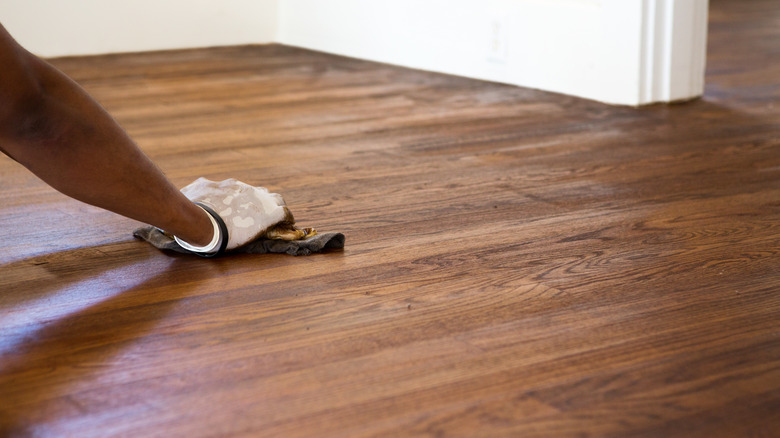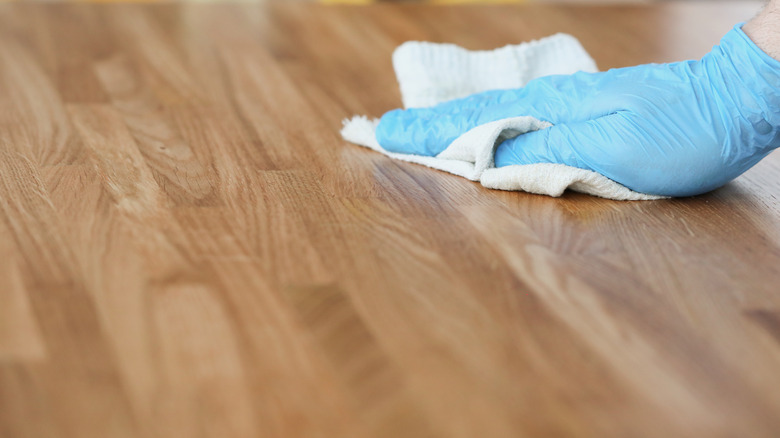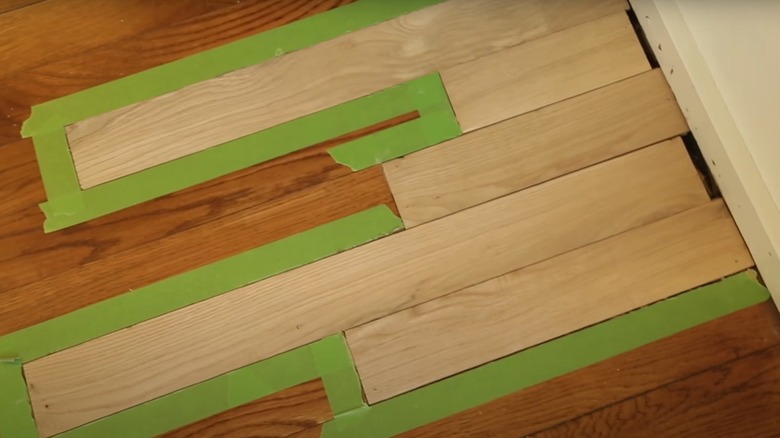How To Fix A Patchy Finish On Hardwood Floors With Linseed Oil
When you need to make a repair to your hardwood floors, it can be quite challenging to then match the existing stain color. Even if you take the time to sand all the boards in the area of the repair, you still have to find a way to get the color just right. One option is to purchase a can of boiled linseed oil. Linseed oil serves as a finish for hardwood floors, but it does not seal it. Instead, it acts more like a stain, which is perfect for this type of hack. It simply enhances and deepens the current look of the floor's wood planks.
This technique works especially well if your current floor has an oil-based finish. It gives the wood a sheen that the linseed oil matches nicely. With this approach it may take several days to reach your desired color, as the linseed oil will darken over time. Reapply as needed until you're satisfied with the results. If you are struggling to create the match, you may need to refinish the entire floor, but it's worth giving linseed oil a try first.
How to use linseed oil to match the current stain
Linseed oil has been a natural product for finishing floors for several decades, and it still works just as well today. It isn't quite as durable as some other options, but it comes at a lower cost, making it popular for fixing patchy spots.
Before refinishing your floor with linseed oil, take the time to sand the planks in the specific area. This smooths out any rough patches and increases the success rate of achieving the color you want. You then need to clean the floor to remove any debris and sawdust that could affect the oil from adhering. You should use boiled linseed oil instead of the raw variety, as boiled linseed oil receives a heating treatment during the manufacturing process that helps it dry faster after application. It also uses a reddish tint in the finish that gives it a better chance of matching wood tones.
Mix the boiled linseed oil with turpentine in a four-to-one combination. You should only use this mixture in an area that has proper ventilation, or you could risk exposure to dangerous fumes. Apply a thin layer of the liquid and leave it for about 30 minutes. Then use a clean cloth to remove any excess. Allow it to dry over a couple of days without using the floor. Add more coats if needed to match the color.
Why do hardwood floors become patchy?
Patchy spots on hardwood floors are common. Whether the patchiness occurs because of normal wear and tear or because you had to replace some original planks with new planks as part of a repair job, you can attempt to fix it with the boiled linseed oil, as we described earlier.
A common reason to actually replace the planks when repairing hardwood floors occurs when you move a cabinet or a built-in island as part of remodeling. The original installers may have simply placed the hardwood planks up to the edge of the cabinet, rather than under it, meaning you must match the stain color on the original planks. You also might need to put new planks in an existing hardwood floor when moving air conditioning ducts. Other reasons you may have a patchy finish and can turn to linseed oil are to correct pet stains and moisture damage, address areas that receive direct sunlight and UV exposure, or if you inadvertently used a harsh cleanser on the hardwood.


